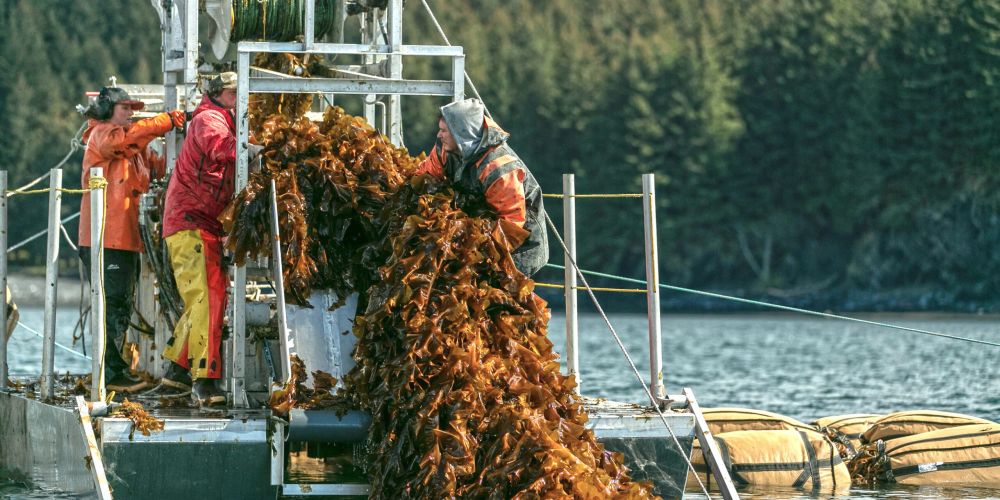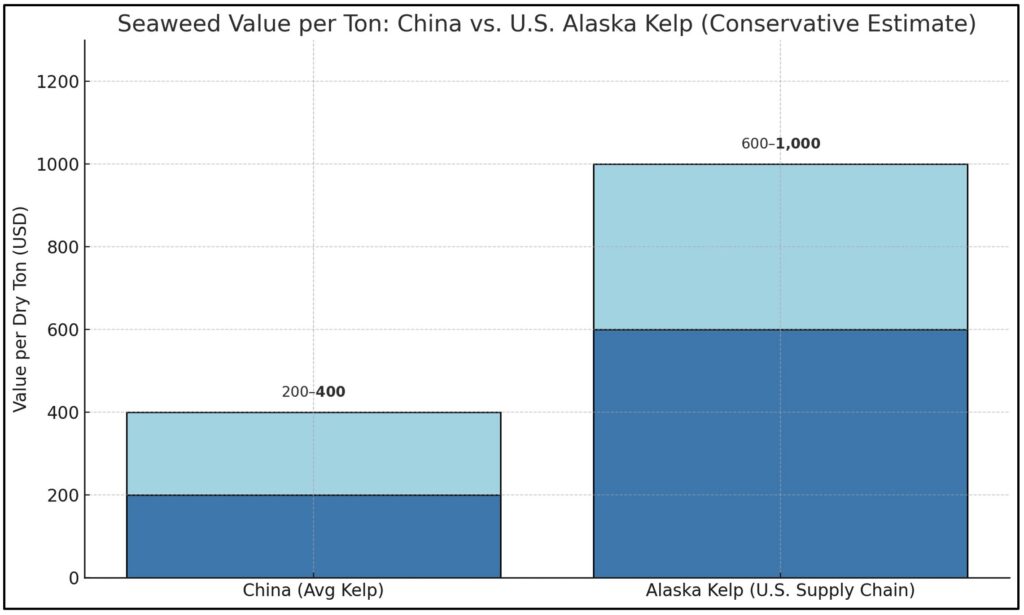American Seaweed Just Had a Big Day

The tariffs announced this week are going to have real consequences—for trade, for inflation, for supply chains. And personally, I think they’re harmful. For my business, for my friends and partners in Mexico, and for the broader project of international cooperation—which is absolutely essential for a livable future.
But if you’ve been building for this kind of pressure point—not reacting to it—it also sharpens the picture.
For Blue Evolution, that picture has been coming into focus for over a decade. We didn’t start this company because of geopolitical tension.
We started it because we saw a gap—and an opportunity… We knew the U.S. needed a seaweed supply chain built outside of China. We knew it could anchor entirely new sectors—agriculture, food, health, biomaterials, even critical minerals. We knew that if we did it right, seaweed could become one of the highest-leverage tools for regenerating oceans, economies, and climate all at once.
So we went to work—starting way back when the atmospheric carbon dioxide (CO₂) concentration at Mauna Loa Observatory was approximately 395 parts per million.
It’s now at 427.
Where We Started
- We pioneered the first commercial seaweed harvest in Alaska’s history.
- We built the first full-stack supply chain in Baja.
- We developed genetics, farming systems, bioprocessing, and end-use applications under one roof.
- We partnered with Indigenous communities before there was investor appetite or government support.
- We put equity and ecosystem integrity into the infrastructure itself.
And we kept going, even when the industry was still being treated like a niche.
From Seaweed to Sovereignty
Most Americans don’t realize this, but China grows more than half of the world’s seaweed. And just like with solar panels, lithium batteries, and magnets, it dominates not only production—but processing, R&D, and price-setting.
Here’s the thing: we can beat them. Not by replicating their model, but by doing it smarter.
With U.S. innovation—genetics, automation, AI, regenerative design—we can grow more seaweed in Alaska alone than all of China’s current output. That’s not wishful. It’s geography, biology, and policy alignment waiting to happen.
- We have much of the cleanest seawater on Earth.
- We have the working waterfronts.
- We have the Indigenous partnerships and the cultural frameworks.
- And we have the chance to build an industry from the ground up that reflects our values.
What We’ve Learned
China’s seaweed industry has created jobs and volume. But it’s also generated real harm:
- Eutrophication
- Monoculture fragility
- Coastal displacement
- Minimal downstream value creation
The U.S. doesn’t need to make the same mistakes.
At Blue Evolution, we apply the precautionary principle: grow the right crops, in the right places, in the right way. And solve the right problem for your customer.
- We track not just yield—but ecosystem services.
- We build for long-term productivity—not short-term margins.
- We embed equity and trust into our models—from Alaska to Baja, New Zealand and beyond.
This isn’t just about being ethical. It’s about building an industry that can actually last.
The Numbers (Conservative, Grounded, and Real)

Volume:
Alaska alone could conservatively grow 54 million dry tons of kelp annually using current farm area and conservative dry yield assumptions.
U.S. innovation.
Add 20% from other states, and we’re talking 81 million tons/year.

Value per ton:
China’s output averages ~$200–400/ton (dry weight).
U.S. seaweed, developed with quality control, traceability, and value-added applications, can conservatively fetch $600–1,000/ton.

Aggregate impact:
- $97–162B/year in finished goods
- 400K–650K direct jobs
- $165–275B/year GDP contribution
That puts seaweed in the same league as soy, semiconductors, and solar—only cleaner, more distributed, and more regenerative.
What Needs to Happen
This is the moment to treat seaweed like the strategic infrastructure it is. That means:
- Federal support for permitting, seed systems, and farm deployment
- Serious investment in biorefining, MRV, and impact accounting
- Market-shaping programs for regenerative inputs and carbon-linked outputs
- Shared infrastructure and Indigenous co-ownership baked into the expansion strategy
- Capital that understands time horizons and infrastructure reality
And One More Thing
I’m not here to hype up seaweed. We’ve all seen too much of that already. This isn’t a pitch. It’s a heads-up.
Blue Evolution has been building the long game. We’ve got the IP, the supply chain, the talent, and the partnerships. We’re scaling, and we have rapidly accelerating innovation. But we’re not chasing the unicorn narrative—we’re shaping a real economy story.
If you’ve been waiting for seaweed to move from fringe to foreground, that time just arrived.
So yes: American seaweed just had a big day. And we believe that can be good news for pretty much everyone, everywhere.
—
Beau Perry, Founder & CEO Blue Evolution









